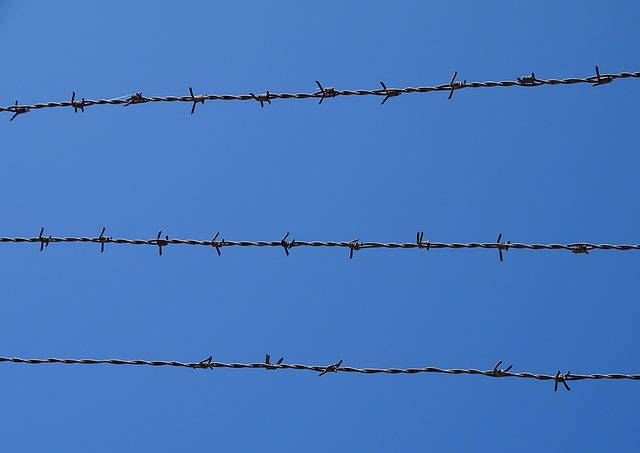The youth justice system faces technological disparities, with limited age-specific innovations in DUI cases, unlike adult counterparts. These gaps contribute to biased outcomes. Emerging technologies like data analytics and AI offer opportunities for fairer, more efficient justice, but must be implemented responsibly to avoid perpetuating existing disparities based on marginalized backgrounds. Best practices include transparency, diverse data sets, oversight, education, and accountability. Responsible integration of these technologies can enhance youth DUI justice while upholding fairness and equity. (SEO keywords: Emerging Technologies in DUI Law)
“In the realm of youth justice, ensuring fair treatment is paramount for a just and equitable society. This article explores the current landscape, highlighting challenges and gaps in the system, particularly concerning emerging technologies and their impact on DUI law. With digital tools revolutionizing legal practices, we delve into best practices to bridge the gap between technology and youth justice, fostering a more inclusive and effective approach. By examining these innovations, we aim to provide insights into shaping a future where every young individual receives fair treatment under the law.”
- The Current State of Youth Justice: Challenges and Gaps in Fair Treatment
- Emerging Technologies: Digital Tools for Enhancing DUI Law and Youth Justice
- Future Implications and Best Practices for Ensuring Fair Treatment in Youth Justice Using New Technologies
The Current State of Youth Justice: Challenges and Gaps in Fair Treatment

The current landscape of youth justice presents a complex web of challenges when it comes to ensuring fair treatment for young individuals entangled in the legal system. Despite strides made in recent years, significant gaps persist, especially at the intersection of technology and justice. In today’s digital age, emerging technologies, such as those used in DUI (Driving Under the Influence) law enforcement, have not been uniformly applied or adapted to address the unique needs and circumstances of youth defendants. This lack of integration results in disparities, where certain demographics may face more severe consequences due to technological gaps.
For instance, while advanced sobriety testing tools can aid in accurate assessments for adults, similar innovations tailored for youth populations are often lacking. Furthermore, the use of data analytics in predicting recidivism rates should consider age-specific factors that might influence interpretation. Without these adjustments, youth justice systems risk perpetuating biases and unfair outcomes, highlighting an urgent need to bridge technological divides and ensure equitable treatment under the law.
Emerging Technologies: Digital Tools for Enhancing DUI Law and Youth Justice

In today’s digital era, emerging technologies are revolutionizing various aspects of society, including law enforcement and youth justice. In terms of Driving Under the Influence (DUI) cases, digital tools offer promising solutions for enhancing fairness and efficiency. For instance, advanced data analytics can analyze vast datasets to identify patterns and trends in DUI incidents, enabling more informed decision-making by law enforcement agencies.
These technologies also streamline processes like evidence management and remote hearings, ensuring accessible and transparent justice for young offenders. Additionally, artificial intelligence algorithms can assist in risk assessment, helping courts make more objective decisions based on behavioral data rather than subjective perceptions. This not only promotes fairness but also contributes to effective rehabilitation programs tailored to individual needs.
Future Implications and Best Practices for Ensuring Fair Treatment in Youth Justice Using New Technologies

As emerging technologies in DUI law continue to evolve, their integration into youth justice systems presents both opportunities and challenges for ensuring fair treatment. Artificial intelligence (AI), for instance, can streamline processes like risk assessment and case management, enabling more efficient decision-making. However, it’s crucial to address potential biases inherent in AI algorithms, as these could perpetuate existing disparities in the treatment of young people from marginalized backgrounds. Regular audits and transparent data practices are essential to mitigate these risks.
Best practices for harnessing new technologies while upholding fairness include promoting transparency in algorithmic use, ensuring diverse representation in data sets used to train AI models, and implementing robust oversight mechanisms. Additionally, continuous education and training for justice system actors on the responsible use of technology can help foster a culture of accountability. By embracing these strategies, we can leverage emerging technologies to enhance youth justice while upholding fundamental principles of fairness and equity.
Emerging technologies, particularly in the context of DUI law, offer promising avenues to transform youth justice. By leveraging digital tools, we can address the current challenges and gaps in fair treatment, ensuring a more equitable and effective system for young people. As we move forward, adopting best practices that prioritize privacy, accessibility, and cultural sensitivity will be crucial to harnessing the potential of these innovations while upholding the highest standards of justice.






